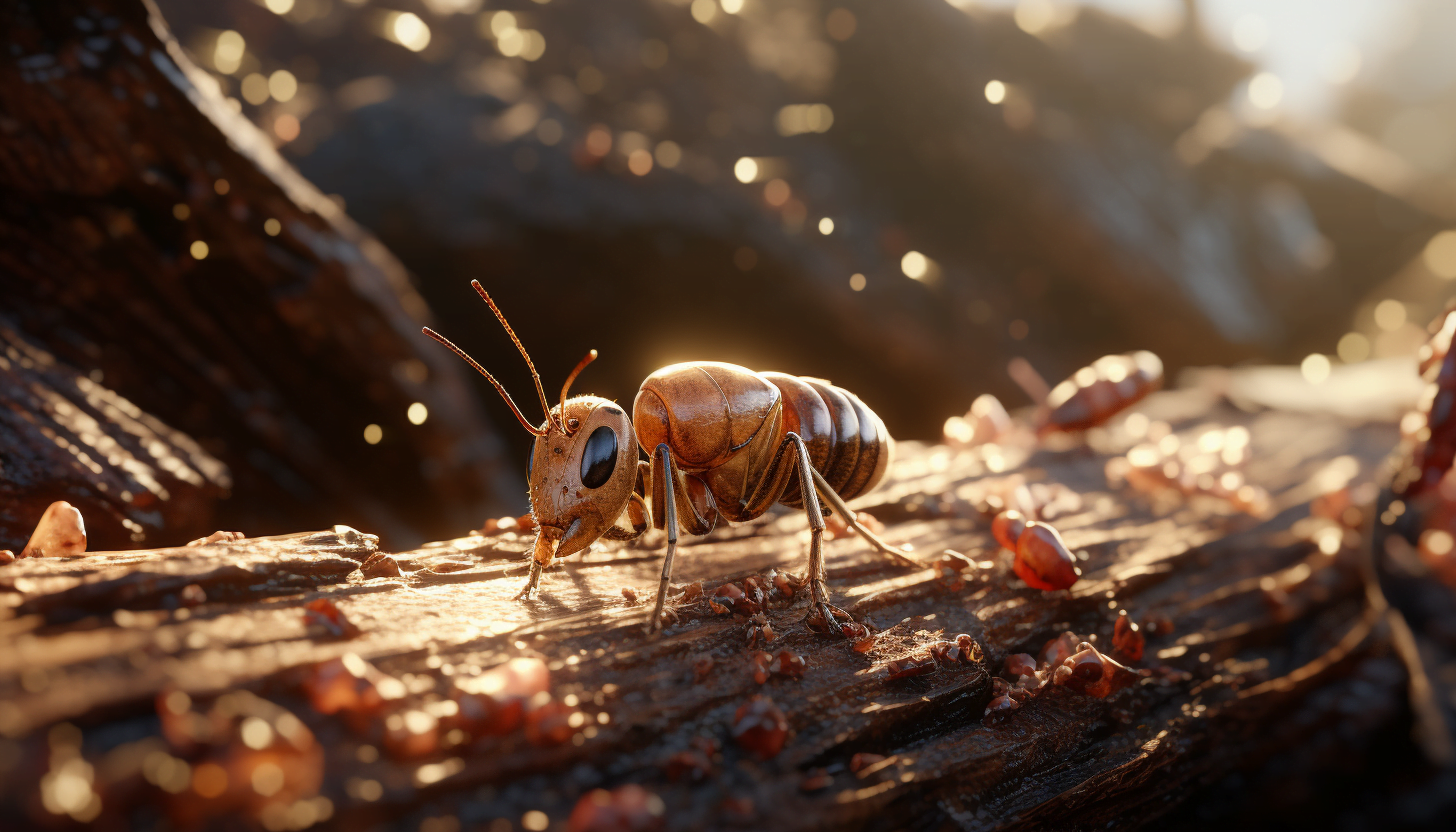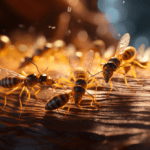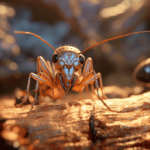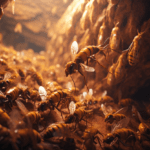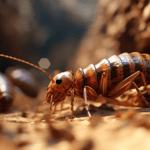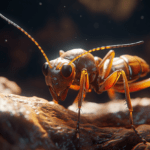Termites are notorious for causing significant damage to homes and buildings. Understanding their feeding habits is crucial for preventing costly infestations and safeguarding your property. In this article, we delve into the various types of termites and their diets, shedding light on the factors that influence their eating habits. By learning how to identify signs of termite infestation and implementing preventive measures, you can protect your home from these destructive pests.
Note: Curious about what specifically draws termites to certain foods? Dive deeper by reading our previous article on Foods That Attract Termites.
Introduction
Termites, often referred to as “silent destroyers,” feed on various materials that make up the foundation of our homes. A thorough understanding of their feeding habits is essential for homeowners and pest control professionals alike. By uncovering what attracts termites and their preferences, we can take proactive measures to minimize the risk of infestation. This article delves into the fascinating world of termite feeding habits, exploring their diets, preferences, and the factors that influence their behavior.
Understanding what termites eat to prevent costly damage to your home
Termites have a diverse diet that primarily consists of cellulose-based materials. Cellulose, found in plant matter, serves as their main source of nourishment. Termites can feed on a wide range of materials, including wood, paper, cardboard, and even fabrics made from plant fibers. This voracious appetite for cellulose makes our homes and structures vulnerable to termite damage.
Key takeaways about termite diets
Here are the key points to remember about termite feeding habits:
- Termites primarily consume cellulose, found in plant matter.
- They can feed on a variety of materials, including wood, paper, and cardboard.
- Certain termites have adapted to consume non-cellulose based materials.
- Factors such as humidity, temperature, and food availability influence their feeding habits.
Different types of termites and their feeding habits
Termites can be classified into three main groups based on their feeding habits: subterranean, drywood, and dampwood termites.
- Subterranean termites: These termites nest underground and construct mud tubes to connect their nests to food sources. They mainly feed on cellulose-based materials such as wood and paper, seeking out moist environments.
- Drywood termites: Unlike subterranean termites, drywood termites do not require contact with soil. They infest dry wood structures and can cause significant damage. Drywood termites feed solely on cellulose-based materials and are known to attack furniture, framing, and even books.
- Dampwood termites: As the name suggests, dampwood termites thrive in moist environments. They primarily feed on damp or decaying wood and are less likely to infest our homes compared to the other types of termites.
Cellulose-based diet of termites
Cellulose is the main component of plant cell walls, and it serves as a vital energy source for termites. These pests possess specialized bacteria and protozoa in their gut, allowing them to break down cellulose and extract nutrients. They have highly efficient digestive systems that enable them to extract sufficient energy from cellulose, a substance that is indigestible for many other organisms.
Non-cellulose based diet of termites
While cellulose is the primary dietary component for most termites, some species have evolved to consume non-cellulose materials. These termites can feed on substances like fungi, lichens, and even soil. Although they still rely on cellulose as their main energy source, these termites have expanded their diet to adapt and survive in different environments.
Hybrid diet of termites
Certain termites exhibit a hybrid diet, incorporating both cellulose-based and non-cellulose food sources. This allows them to thrive in a wider range of habitats and makes them more challenging to control. These adaptable termites can switch between different food sources depending on environmental conditions and resource availability.
Factors influencing termite eating habits
Several factors influence termite feeding habits. Humidity and temperature play significant roles in their activity levels and food preferences. Termites are attracted to moisture, making damp environments more favorable for their survival. Additionally, the availability of food sources and the presence of competitors also impact their feeding habits.
Signs of termite infestation and prevention methods
Identifying signs of termite infestation is crucial for swift action and prevention of further damage. Look out for:
- Wood damage: Hollowed or damaged wood, bubbling or peeling paint, and the presence of mud tubes are signs of termite infestation.
- Discarded wings: Flying termites, also known as swarmers, shed their wings after finding a new nest site. Spotting discarded wings is a clear indication of an infestation.
- Frass: Termite droppings, known as frass, are tiny pellets that resemble sawdust. Their presence near wooden structures indicates termite activity.
To prevent termite infestations, take the following preventative measures:
- Remove wood debris and mulch from near your home.
- Ensure proper ventilation and eliminate excess moisture around your property.
- Seal any cracks or gaps in your foundation and walls to prevent termites from entering.
- Schedule regular termite inspections and treat your home with termite repellents or pesticides.
The Surprising Diet of Termites: What They Eat Besides Wood
[youtube v=”gTzKyuZNDMA”]
Introduction:
Termites are known for their destructive nature, causing millions of dollars in damage every year to homeowners across the United States. While it’s common knowledge that termites feast on wood, there are other surprising items that make it onto their menu. In a recent web series by pest management experts, they explore the intriguing eating habits of termites and uncover some unexpected findings. Here, we delve into the key points discussed in this series and shed light on the diverse diet of these tiny creatures.
Termites’ Appetite for More than Wood:
Contrary to popular belief, termites are not solely fixated on consuming wood. They have a voracious appetite for anything made of cellulose, which is the main substance found in plant cell walls. This means that termites can also dine on items like cotton and paper, in addition to wood. The dictionary used in the web series was completely devoured by termites, with every page eaten from cover to cover. This surprising fact highlights their ability to consume a wide variety of materials.
Understanding the Impact:
Knowing that termites can eat more than just wood is significant as it allows experts to better predict potential damage. By understanding their diverse diet, it becomes easier to anticipate what might happen to various household items. Termites have the potential to wreak havoc on everyday objects, from shoes and books to electronics and even money. With an estimate of 100,000 hungry termites capable of causing extensive damage, it is crucial to be aware of their ability to chew through a wide range of materials.
Ongoing Research:
The web series is an ongoing project by a team of entomologists at the National Pest Management Association. They are actively researching termites’ dietary habits to further understand why termites choose certain items to consume while avoiding others. By gaining insights into the underlying reasons, experts hope to develop more effective methods of termite control and prevention.
Termites’ diet extends beyond just wood, encompassing materials that contain cellulose such as cotton, paper, and even books. This surprising discovery emphasizes the importance of understanding the full extent of damage termites can cause. The ongoing research and insights provided by the web series shed light on the complexities of termite behavior, aiding in the development of better strategies to protect homes and prevent infestations. It is clear that homeowners should be proactive in addressing termite issues and taking preventive measures to safeguard their properties from these relentless pests.
Conclusion
Understanding the feeding habits of termites is vital for protecting our homes and structures from their destructive capabilities. By recognizing their dietary preferences, we can implement preventive measures and minimize the risk of infestation. Regular inspections, moisture control, and timely intervention are key to safeguarding our properties from termite damage.
FAQs
- How do I know if I have a termite infestation?
- Look out for signs such as damaged wood, discarded wings, and frass near wooden structures. If you suspect an infestation, consult a professional pest control service.
- Can termites feed on materials other than wood?
- Yes, certain termites can feed on non-cellulose materials like fungi and soil. However, their primary diet consists of cellulose-based materials like wood and paper.
- Are all termites equally destructive?
- No, the level of destruction caused by termites varies. Drywood termites, for example, can cause extensive damage to wooden structures, while dampwood termites are less likely to infest our homes.
- How can I prevent termite infestations?
- To prevent termite infestations, remove wood debris, ensure proper ventilation, seal cracks and gaps in your home’s foundation, and schedule regular termite inspections.
- Can I eliminate termites on my own?
- While there are DIY methods available, it is recommended to consult professional pest control services for effective termite extermination and prevention.
- Senior at What Age: Benefits & Eligibility Guide - March 29, 2025
- Unlocking Senior Benefits: How Old is a Senior? Your Complete Guide - March 29, 2025
- Master Russian Politeness:A Guide to Saying Please - March 29, 2025
